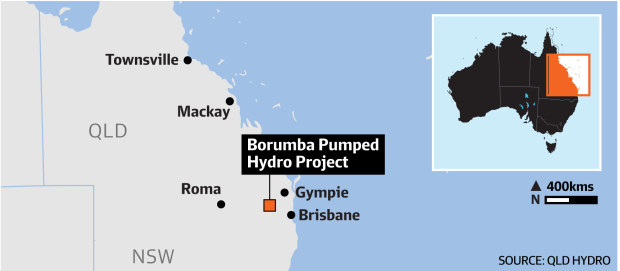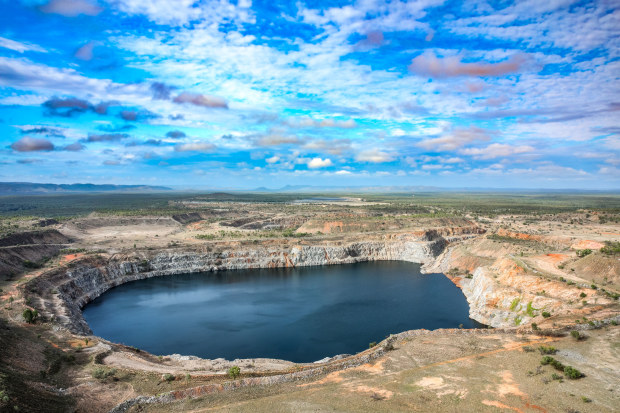The total cost for the two pumped hydro projects in Queensland is expected to top $30 billion.
Mr Dick said Queensland’s strong economic position post-pandemic had allowed the Palaszczuk government to fund cost-of-living measures, pay down debt and fund key infrastructure, such as Borumba, in next Tuesday’s budget.

“Within nine months of our [$62 billion] Energy and Jobs plan, we are making a substantial investment which we can do because of the strength of our budget and economy,” Mr Dick said.
The treasurer rejected criticism about relying on pumped hydro projects to replacing the state’s coal-fired power stations by mid-next decade, as other states opt to embrace big batteries instead.
“We have no evidence we are not going to hit that [2035] target,” he said.
“We are proceeding at pace and that’s why this investment is so important at this time.
“We think it’s a very clear, solid, proven technology and battery storage is going to have to accelerate significantly to catch proven technology like pumped hydro.”
Geography is crucial for pumped hydro projects, which require an upper and lower reservoir. Water is pumped – preferably using renewable energy such as solar or wind – from the lower to upper reservoir and then stored until it is needed, making it a “virtual battery”.
The Borumba projects is expected to be completed by 2029, while the Pioneer-Burdekin project is not due to be operational until 2035.
The Palaszczuk government is aiming to have 70 per cent renewable energy by 2032 and 80 per cent by 2035 – a big task given renewables only make up about 25 per cent of total power generation at present.
Energy experts have already warned Queensland’s two proposed pumped hydro plants – set to replace its existing fleet of five state-owned coal-fired power stations – only have 24 hours of storage capacity, compared to seven days for Snowy 2.0.
Genex Power founder Simon Kidston has also acknowledged pumped hydro projects are hard to get off the ground, saying it took 10 years to get the $777 million Kidston project from idea to near-completion.
Snowy Hydro’s Snowy 2.0 project has run into several problems, with the budget blowing out from $3 billion to $5.9 billion – and could climb as high as $10 billion – and now a two-year delay to 2029.
There has also been some local opposition to the Borumba project, near Gympie, and the location of large transmission lines to connect the project to the grid.

Genex Power’s pumped hydro storage project has taken 10 years to get off the ground.
The CSIRO’s Renewable Energy Storage Roadmap report, released in April, estimated the national electricity market could require a 10- to 14-fold increase in its electricity storage capacity between 2025 and 2050.
It said batteries and pumped hydro would play a key role in storage provision, but noted the major challenges for pumped hydro projects and cited cost overruns and time delays to Snowy 2.0 and Genex Power’s Kidston project in North Queensland.
Grattan Institute energy program director Tony Wood said Queensland’s two new pumped hydro projects were not a “like for like replacement” for the state’s fleet of coal-fired power stations, which have been the backbone of the state’s power grid for decades.
“On the surface they don’t solve the problem. They are designed like big batteries, when the issue is about long storage,” he said.
“They are really big, but only provide 24 hours continuous energy. This might not be enough if you have two weeks of bad weather when there is not enough solar and wind.”
The Palaszczuk government will likely come under fresh pressure to deal with rising power prices after the Queensland Competition Authority on Friday released its regulated price increases for regional Queensland.
While residents and businesses in the south-east corner face price rises of up to 21.5 per cent from July 1, regional households will be slugged with rises of 28.7 per cent (an extra $429) and small businesses with 26.8 per cent (an extra $511).
It comes after last week’s announcements that further delays to the return of the state-owned Callide C coal-fired power station would push up wholesale power prices and create more grid instability over summer.
The government will offer an energy rebate of more than $200 for households in next week’s budget to deal with cost of living pressures, but opposition treasury spokesman David Janetzki said it wasn’t enough.
“The government promised 150 times that power bills would be cheaper, but they’re more expensive,” Mr Janetzki said.
“This is yet more evidence Queenslanders are paying higher power prices due to the chaos and crisis of this government.”
